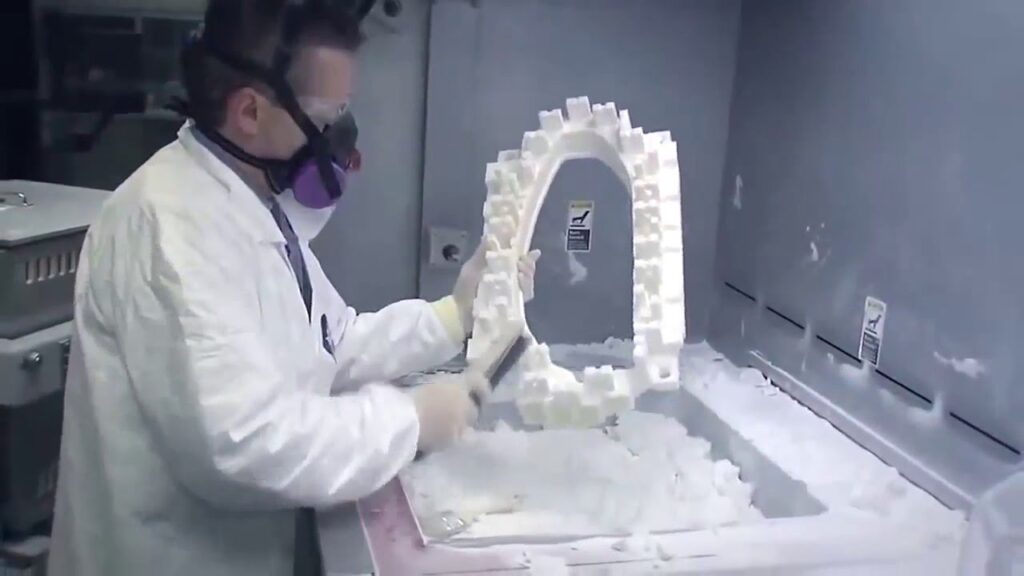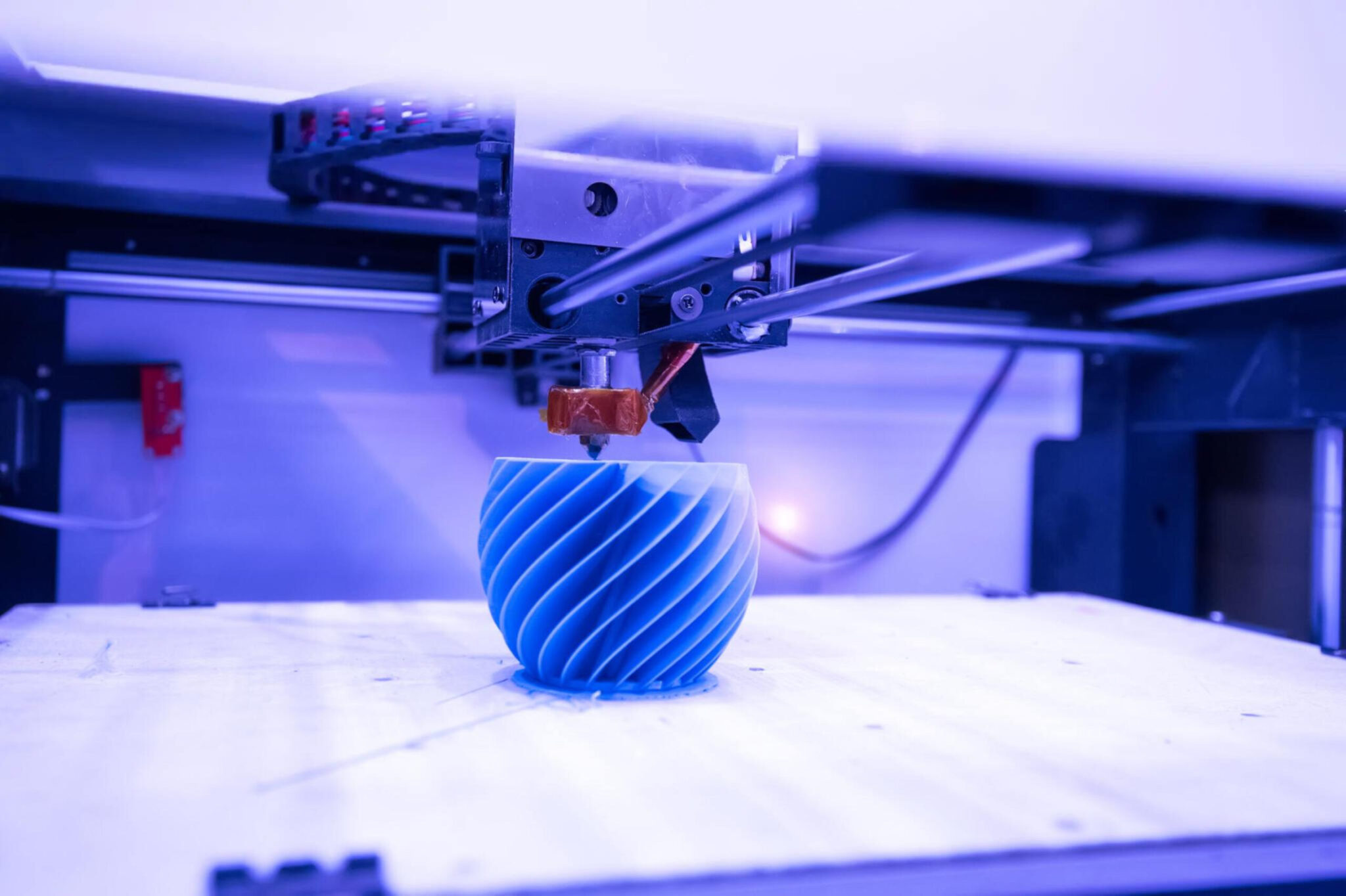Table of Contents
Selective Laser Sintering (SLS)

Understanding SLS Additive Manufacturing: An In-Depth Guide
Selective Laser Sintering (SLS) is a powerful and versatile additive manufacturing technology that has transformed the way we produce complex and durable parts. In this comprehensive blog, we’ll delve into the intricacies of SLS, exploring its process, advantages, disadvantages, and wide-ranging applications. By the end, you’ll have a thorough understanding of why SLS is a leading choice in the world of 3D printing.
What is SLS?
Selective Laser Sintering (SLS) is an additive manufacturing technique that uses a high-powered laser to fuse small particles of powdered material into a solid structure. It is known for its ability to produce strong, functional parts with complex geometries and excellent mechanical properties.
How Does SLS Work?
The SLS process involves several key steps:
Design: The process starts with a 3D digital model created using Computer-Aided Design (CAD) software. The model is then converted into a format the printer can interpret, typically an STL file.
Preparation: The digital model is sliced into thin horizontal layers using slicing software. The software generates a G-code file, which contains detailed instructions for the printer on how to build each layer.
Printing: The SLS printer has a build chamber filled with a fine powder material, such as nylon, polyamide, or composites. A laser selectively sinters (heats and fuses) the powder particles together based on the G-code instructions, layer by layer. The build platform lowers incrementally, and a new layer of powder is spread over the previous one, repeating the process until the part is fully formed.
Cooling: Once printing is complete, the build chamber needs to cool down before the part can be removed. This step is crucial to ensure the stability and accuracy of the final part.
Post-Processing: After cooling, the part is extracted from the powder bed. Excess powder is removed using brushes or air jets. Additional post-processing steps may include sandblasting, dyeing, or surface finishing to achieve the desired properties and appearance.
Advantages of SLS
SLS offers numerous benefits that make it a preferred choice for many industries:
Complex Geometries: SLS can produce intricate and complex geometries that would be difficult or impossible to achieve with traditional manufacturing methods. This includes internal features, undercuts, and interlocking parts.
No Need for Support Structures: Unlike some other 3D printing methods, SLS does not require support structures. The unsintered powder acts as a natural support for the part during the printing process, reducing material waste and post-processing time.
Durable and Functional Parts: SLS parts are known for their excellent mechanical properties, including high strength, durability, and resistance to environmental factors. This makes them suitable for functional prototypes and end-use applications.
Wide Range of Materials: SLS supports a variety of materials, including polymers, metals, and composites. This versatility allows for the production of parts with specific properties tailored to different applications.
Efficient Production: SLS is capable of producing multiple parts in a single build cycle, optimizing production efficiency and reducing lead times.
Disadvantages of SLS
While SLS has many advantages, it also has some limitations:
High Initial Costs: SLS equipment and materials can be expensive, making the initial investment higher compared to other 3D printing technologies like FDM. However, the cost can be justified by the quality and performance of the parts produced.
Surface Finish: SLS parts typically have a rough surface finish due to the powder particles. Additional post-processing steps, such as sanding or tumbling, are often required to achieve a smoother finish.
Cooling Time: The cooling process in SLS can be time-consuming, especially for large builds. This can impact overall production time and efficiency.
Material Recycling: While unsintered powder can be reused, it degrades over time and can affect the quality of future prints. Proper management of powder materials is essential to maintain consistent part quality.
Limited Color Options: SLS typically produces parts in a limited range of colors, primarily natural or white. Dyeing or painting is often required to achieve specific colors, adding to post-processing steps.
Applications of SLS
SLS’s ability to produce strong, complex parts makes it suitable for a wide range of applications across various industries:
Aerospace: SLS is used to produce lightweight and durable components for aerospace applications, including brackets, ducts, and housings.
Automotive: The automotive industry utilizes SLS for prototyping and manufacturing custom parts, such as intake manifolds, brackets, and interior components.
Medical and Dental: SLS is employed to create custom medical implants, surgical guides, and dental models, benefiting from the technology’s precision and biocompatible materials.
Consumer Products: SLS enables the production of complex and customized consumer products, such as eyewear, sports equipment, and electronic housings.
Industrial Manufacturing: SLS is used to manufacture functional prototypes, tooling, jigs, and fixtures, enhancing production efficiency and product development.
Conclusion
Selective Laser Sintering (SLS) is a highly versatile and powerful additive manufacturing technology that excels in producing durable, functional parts with complex geometries. Its ability to eliminate the need for support structures, combined with a wide range of material options, makes it a go-to choice for many industries. While it has some limitations, the benefits of SLS often outweigh the drawbacks, making it a valuable tool in modern manufacturing.
